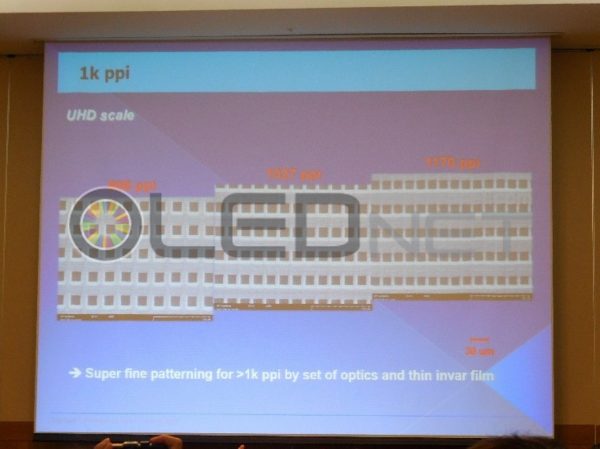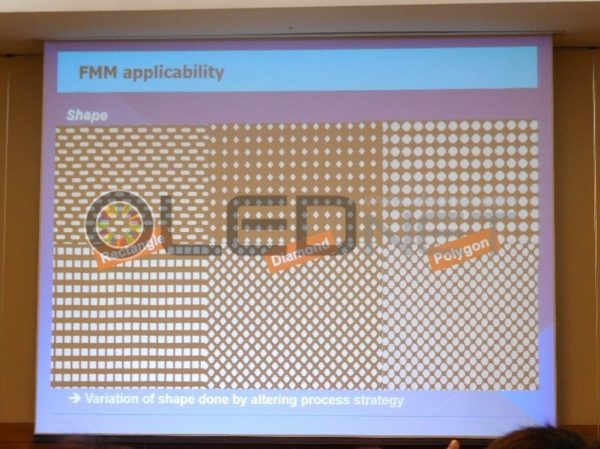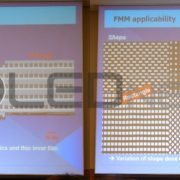[iMiD 2017] AP Systems, USPL을 통해 FMM의 해답을 찾다
28일 부산 BEXCO에서 개최된 iMiD 2017에서 AP Systems는 USPL(ultra-short pulse laser)로 1000ppi FMM개발에 성공했다고 발표하였다.
FMM은 화소와 RGB 유기물을 증착하는 역할을 하기 때문에 FMM은 OLED의 해상도와 수율을 결정짓는 요소로서 작용된다. 현재 FMM은 주로 전주(etching) 방식으로 제작되고 있다. 이 방식은 미세 패턴의 정밀도와 두께, 무게에 의한 섀도우 현상이 발생하는 문제가 있어, 이를 해결하기 위해 laser 가공, 전해주조(electro-forming)등 다양한 FMM 제조 공정이 개발되고 있다.
이 중 laser 가공 방식은 laser 조사 시 발생하는 열(thermal effect)로 인해 pin-hole 주변에 burr가 형성되는 이슈가 있다. 이러한 burr는 FMM의 섀도우 구간을 증가, RGB 유기물 증착 시 패턴이 겹치는 현상을 야기시킴으로써 OLED의 해상도를 저하시킨다.
AP Systems는 이러한 점을 착안해 burr 현상이 없고, 나아가 taper angle을 제어하는 burr-free laser process을 개발하였다.
Burr-free laser process는 단방향 펄스를 일정 횟수로 나누어 짧게 조사하는 방식으로 연속적으로 laser를 조사하지 않기 때문에 축적되는 열 에너지가 최소화 되어 burr 형성을 막는다. 또한, laser의 energy를 제어함으로써 energy 축적하여 taper를 형성하는 방식이다.
AP Systems는 이 방법을 통해 ‘1170ppi의 FMM 뿐만 아니라 미세 pin-hole의 모양이 사각형 또는 다이아몬드, 다각형 등 다양한 형태를 갖는 FMM도 제작하였다’며 ‘USPL 방식이 적용된 대면적 FMM 제조 장비도 개발하였다’고 설명하였다.
또한, AP Systems는 FMM 제조 장비에 대해 ‘multi-beam과 USPL이 장착되어 있어 생산성을 향상시킬 수 있으며, UHD를 구현할 수 있다’고 덧붙였다.
14년 Galaxy Note4 출시 이후부터 아직까지 OLED의 해상도는 QHD 급에 머물고 있다. 고해상도(UHD급 이상)를 가지는 OLED를 제조하기 위해서는 FMM이 기술적으로 직면하고 있는 다양한 문제를 해결해야 되는 실정이다. 이에 따라 AP Systems의 USPL 기술이 향후 OLED 시장에 어떠한 영향을 미칠지 앞으로의 귀추가 주목된다.

<AP Systems가 제작한 1000ppi FMM>

<다양한 형태의 FMM>

